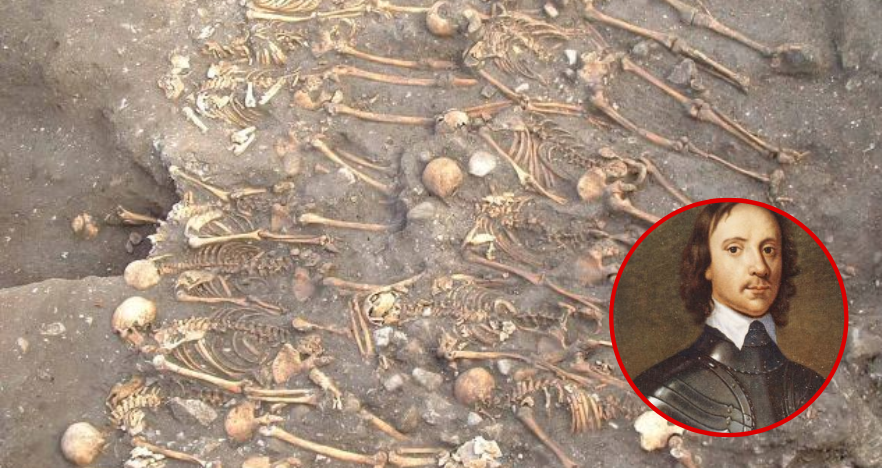
Oliver’s lost army: Buried side by side, the Roundheads who fell victim to a terrible siege
They were crammed together and buried side by side, stripped of all clothing and personal possessions.
Force of circumstance determined this most impersonal and undignified resting place.
For the men buried in mass graves at a ruined York church were the soldiers of Oliver Cromwell’s Parliamentary army.

Skeleton army: The remains found in York, one of 10 mass graves containing Roundhead soldiers
The Roundheads were not killed in combat but probably by infectious disease during the gruelling English Civil War siege of the city.

Leader: Oliver Cromwell led the Roundhead cavalry
Their comrades went on to defeat King Charles I’s Cavaliers at the Battle of Marston Moor in 1644 and turn the tide of the war.
But history forgot the more than 100 souls who probably never made it to the battleground.
Now, more than 350 years later, archaeologists have unearthed the graves and their skeletons to reveal the story of Cromwell’s forgotten soldiers.
Routine excavations in 2007 at the site of a medieval church, south of York’s historic city walls, led to the uncovering of ten mass graves.
Archaeologists knew from previous discoveries that the ‘lost’ 11th century church of All Saints in Fishergate had once been there. However, these newlydiscovered graves took archaeologists forward 600 years to a time when the country was split in two by a bloody civil war.
The position of the graves showed they were dug at a time when only the shell of the abandoned church remained. They varied in size, with the smallest containing four skeletons and the largest 18.

Delicate work: An archaeologist examines one of the 350-year-old bodies

No ceremony: The bodies were evidently buried with some haste
The skeletons were arranged neatly in parallel rows, mostly laid on their side or face down in the dirt, and were packed together like sardines in a can. Larger graves had a second row where the heads of one row overlapped the feet of another.
No buckles, buttons or jewellery were found, indicating they were probably buried naked. In total there were 113 skeletons.
It was not possible to establish the sex of them all, but 87 were male, most between the ages of 35 and 49.
Details of the find are revealed in Current Archaeology magazine in a report by experts Lauren McIntyre and Graham Bruce.
Analysis of the skeletal remains indicated they were not wounded and did not die in battle. But most had conditions, such as spinal joint disease, caused by excessive physical labour.
‘The skeletons are likely to represent a military group who all died within a short period,’ said the authors.
‘Given the probable 17th century date, it is likely that they relate to the Civil War.’
York was a Royalist stronghold and was besieged by a Parliamentary force of 30,000 between April and July 1644.
The siege ended soon after both armies clashed in fields outside York at Marston Moor – the largest single battle of the Civil War.
Evidence suggests that the 113 bodies could well have been Cromwell’s soldiers who died from disease while laying siege to the city.
Although the Royalist army was well-provided for behind the city walls, the besieging Parliamentary forces suffered severe deprivation, making them susceptible to illness and diseases such as dysentery and typhoid.
The skeletons are being kept for further study at the University of Sheffield’s archaeology department.




